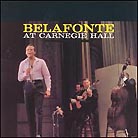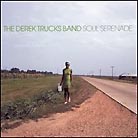|
This review page is supported in part by the sponsor whose ad is displayed above
|
|||||||||||||||
 |
|||||||||||||||
 |
|||||||||||||||
Reviewer: Edgar Kramer Source Digital: Sony XA-5ES as transport; Bel Canto Design DAC 2 Source Analogue: Pro-ject 6.1 turntable with Pro-ject arm and Goldring cartridge Preamp/Integrated: Supratek Sauvignon with NOS RCA and Sylvania tubes Amplifier: Pass Labs X 250.5 Speakers: Wilson Audio WATT/Puppy System 6 Cables: Harmonic Technology Magic Digital; Harmonic Technology Magic, Truthlink Silver and Truthlink; DanA Digital Reference Silver; Eichmann eXpress 6 Series 2 interconnect cable; Harmonic Technology PRO-9+ loudspeaker cable; Harmonic Technology Fantasy AC; Shunyata Research Diamondback power cords, Eichmann eXpress AC power cable Stands: Lush 4-tier, partly sand filled Powerline conditioning: PS Audio P-300 Power Plant (digital equipment only), dedicated 20 amp circuit Sundry accessories: Bright Star Audio IsoRock Reference 3 [in for review], Bright Star Audio IsoRock 4 isolation platforms and BSA IsoNode feet; Black Diamond Racing cones; Stillpoints ERS paper in strategic positions around DAC, Shakti On Lines; Densen CD demagnetizer; Auric Illuminator CD Treatment; ASC Tube Traps Room size: 16' w x 21' d x 10'/11' h [stepped ceiling] in short wall setup, opens to adjoining office room Review component retail: $599 |
|||||||||||||||
| IsoRock Me, Amadeus Barry Kohan from Bright Star Audio has been manufacturing vibration isolation products for many, many moons and has received numerous accolades from some of the most prestigious names in the consumer and professional audio industry. The company specializes in the manufacture of all manner of platforms varying in quality and price points and is responsible for the now famous IsoNode rubber compound nodules. In addition, Bright Star Audio produces some of the heaviest-duty equipment racks on offer. The subject of this review, the IsoRock 3 Reference, is a beautifully finished yet simple platform that belies the technology hidden within. Its advanced construction is a combination of multiple layers of high-density polymers, two different types of polymer adhesives, multi-density fiberboard and non-resonant primers. The internal sections are constructed in a staggered configuration providing critical self-damping and the ability to absorb and diffuse mechanical vibration. The IsoRock 3 Reference is nicely finished in a heat-fired glass crystal exterior and comes complete with select-grade IsoNode feet. I asked Barry Kohan, the designer and principal at Bright Star Audio, about the ideologies and philosophies inherent in this design: |
|||||||||||||||
 |
"The IsoRock 3 Reference represents the ultimate expression of our IsoRock design series. It utilizes the most sophisticated configuration and materials to provide the highest performance capability in a single anti-vibration platform. Our philosophy of vibration control is rather straightforward. In order to faithfully reproduce the original performance in the recording, we must eliminate all three sources of vibration and resonance. |
||||||||||||||
|
1) Floor-borne vibration including vibration that is direct-coupled from the loudspeaker to the floor, then through the component stand into the feet of |
|||||||||||||||
|
the component. AC/heating systems can send low-frequency vibration through the building's structure. Exterior traffic (trucks, busses, cars, freeways, subways, trains, airplanes, etc.) sends very low frequency energy up through the floor. Natural geological seismic activity adds its bit. |
|||||||||||||||
 |
|||||||||||||||
Play it again, Sam Well, my listening experience certainly benefited from Barry's ideas and their fruition. Plonking a CD player, valve preamplifier or indeed any component on a rickety old audio rack is no longer suitable to discerning, advanced audiophiles. It seems not so long ago that cable and even amplifier differences were thought to be null. Platforms that improve the sound? Get the eff outa here! Used under my CD transport with the supplied premium IsoNodes, the IsoRock 3 Reference brought on a noticeable firming up of the sound to my highly regarded SONY XA-5ES. By firming up I don't just mean that only the bass became tighter, punchier and more detailed but that the rest of the frequency range benefited from an increased solidity as well. There was a subtle increase in dynamic range and not so subtly, the soundstage presentation was enhanced with more focused images and a deeper sense of space. |
|||||||||||||||
 |
One of the best examples I can think of for soundstage presentation is the classic Belafonte at Carnegie Hall [RCA R30P 1001/2]. Yes, Harry moves around a lot but the addition of the IsoRock 3 Ref allowed easier tracking of his movements on stage. Location cues were easier to pick up, clearly an indication of superior imaging. Pre IsoRock, such stage antics were less geographically nomadic. And when Harry stood in one place -- briefly, as he is wont to -- his image was solid and focused. |
||||||||||||||
| As I said, the bottom range also benefited from the added support. Derek Trucks Band's Soul | |||||||||||||||
| Serenade [Columbia CK89013, 2003] is a well-produced collection of improvisations, original compositions and re-interpretations of well-known numbers. "Rasta Man Chant", a tribute to Bob Marley, is intro'd with a meandering melody that mutates into the song proper. This transition is accented with a deep bass riff and incredibly punchy tom and kick drum. With the IsoRock 3 Ref, the drums had an added sense of impact, the bass line a growling energy and rock-steadiness. Snare and rim whacks were also separated from the mix with greater clarity. |
|||||||||||||||
 |
|||||||||||||||
| Improved separation was also noted with all sorts of vocals too numerous to list. Whether Jazz, Rock or Opera, vocalists stood out with greater relief from a busy or complex mix. The effect is | |||||||||||||||
| akin to a rich oil painting where the artist accentuates certain colors, patterns or themes and stands them out as texturally rich exclamations in prominence within a flatter background. By the way, this enhanced yet natural-sounding separation is also one of the many, many strengths of my recently acquired reference amplifier, the superb Pass Labs X 250.5 and also a well-known attribute of the WATT/Puppies. Right there, my friends, is the beginning of the elusive phenomenon mysteriously known as compatible complementing attributes or system synergy within audiophile circles. Or, as Bogart would say, the start of a beautiful friendship. No Pain, No Gain I can safely say that as audiophiles and music lovers in pursuit of blissful fidelity via our audio equipment, there is a likelihood we have suffered, are about to or indeed are in the midst of a period of mild to severe frustration. We dedicate an obscene amount of time setting up, tweaking and listening to ever so minute subtleties. We toil tirelessly cleaning contacts and sockets so as to render them glittering in golden glory. We shuffle cable orientation and polish the precious inch-thick fascias so as to draw admiring sighs from our similarly diseased comrades. We upgrade components far too regularly as per the current fashion or after reading the latest magnificent critique by a flavor-of-the-month celebrity rock star reviewer. In extreme cases, we throw our arms in the air and depart, tail between the legs, to a different hobby or for those with valiant spirits and unfathomable pockets, on to the next AudiogoN advertisement and/or friendly audio dealer. Been there, done that. That's what my therapist tells me anyway. Having lived through periods of frustration and endured unnecessary equipment changes many audiophiles, yours truly included, find ourselves in a more static period where we upgrade much less often and therefore capitalize on existing resources, fine tune, refine. We persevere with the status quo, patiently endure temporary setbacks and resolve them by diligent investigation and rational consideration. No more rash decisions! It is during this growth of wisdom in our maturing period that we may begin to examine potential system refinements - intelligent contributions that are the cream on a scrumptiously tasty audio pie. Thus whips in the Bright Star Audio IsoRock 3 Reference isolation platform. Barry Kohan is on to a winner here. The IsoRock 3 Reference is an aptly designed, skillfully executed product that in my system brought out a more precise stereo image, a larger soundstage, a firmer bass quality and superb separation and resolution of vocals within complex mixes. In my opinion, the IsoRock 3 Reference isolation platform is highly deserving of one's serious consideration when looking to fine-tune and enhance a high-end audio system. |
|||||||||||||||
| Manufacturer's Comment: We would like to thank Edgar Kramer for writing and Srajan Ebaen of 6moons for publishing the wonderful review of our IsoRock 3 Reference anti vibration platform. The IsoRock 3 Reference is, in many ways, the culmination of our sixteen years as one of the leading companies offering high performance vibration control products for audio and video systems. I designed and built the original Big Rock vibration control platform in 1985. The Big Rock, a high mass/high absorption sand-filled platform, has won many industry awards and I have been issued a patent on the design. The Air Mass, Little Rock and Gibraltar series have also won numerous design awards. The dozens of industry awards we have earned over the past fifteen years, being voted "Product of the Year 2003" by Enjoy The Music.com plus being nominated four times for "Accessory of the Year", twice for "Editor's Choice", "Best of the Year", "Best Buy", "Product of the Year", three times for the "Golden Note" award, five times for "Component of Merit" and many others are a testament to the effectiveness of our designs. For the very best in vibration control, I have created our Reference Series. These components are the ultimate expression of my philosophy of vibration control and incorporate numerous cutting-edge materials including heat-fired glass crystal, high density polymers, polymer adhesives, carbon fiber, solid brass and many other innovations. The new IsoRock 3 Reference platform was introduced at 2004 CES to provide a large slice of the performance capabilities of our top Reference Series models but at a more affordable price. Over the last few years we have introduced a number of inexpensive vibration control products including the award- winning IsoNode anti vibration feet. Like the IsoRock 3 Reference, the IsoRock 4 and IsoRock 5 platforms also combine multiple layers of high mass and absorptive materials, use IsoNode feet on the underside to decouple from floor borne vibration and are priced very reasonably. Many of our products are available factory direct through our website. We invite all music lovers to read our philosophy of vibration control by visiting our website. You can also view an extensive discussion about the varying degrees of effectiveness of pointed cones, three-point mounting, round ball devices, the misguided notion of "tuning" vibration, concrete vs. wood floors and many other interesting topics. Home theater enthusiasts will also be impressed with the ability of our products to significantly improve the video picture in their systems as well as the audio quality. Computer users have discovered that using our IsoNode feet under multimedia speakers, laptops and outboard drives improves performance. Professional audio and video studios use our products to give their releases the finest quality available. Barry Kohan |
|||||||||||||||
 |
|||||||||||||||
|
Manufacturer's website
|
|||||||||||||||
 |
|||||||||||||||